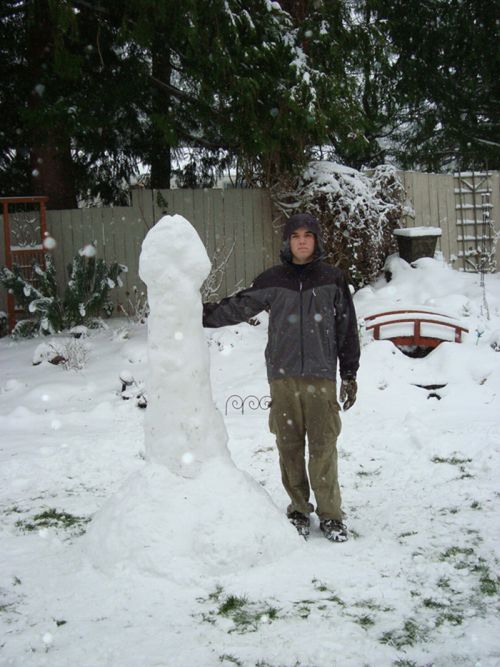

(The shape left in the snow should look like an angel!). They may even form snow angels by lying on their backs in the snow and moving their arms and legs in and out. They might use that day to build a snowman or have a snowball fight (= throwing balls of snow at each other). Children who cannot go to school because heavy snow has caused their school to shut may enjoy a snow day. If there is so much snow that people cannot get out of their house, they are snowed in.

On the weather forecast, sleet is sometimes referred to as wintry showers. Snow that is wet when it falls – a mixture of snow and rain – is called sleet. Less appealingly, snow lying on the ground that has begun to melt (or thaw) is slushy: The snow on the roads was slushy and grey. Powdery snow is snow that has just fallen and is dry and loose. We also use words to describe the quality of snow. A pile of snow which has been blown in this way is a drift or a snowdrift. When a strong wind blows snow into a pile, we say the snow drifts.

Light snow that falls suddenly and is blown in different directions by the wind is often referred to as a flurry: The forecast said it was going to be a very cold day with snow flurries in the east. This set of conditions is called a whiteout. During a blizzard, there may be so much snow and cloud that we cannot see properly. If that snowstorm is extreme, we may describe it as a blizzard, especially if the wind is very strong. When a lot of snow falls during a storm, we talk about a snowstorm. The word snowfall is used especially to talk about how much snow falls: Heavy snowfalls are expected tonight and tomorrow. If it is a very thin layer of snow, we sometimes call it a dusting: a light dusting of snow. If the covering is thick, we may call it a blanket of snow. When the snow stays on the ground and does not melt, we say it settles.
.jpg)
Each of the tiny pieces that falls is a snowflake. When it comes from the sky, it falls or comes down. With several centimetres of snow still lying on the ground, we thought it time to take a look at words relating to snowy or wintry weather. Under the "Local User" area, right click "Library" and then select "New Folder." Double click on the new folder to re-name it "Commercial Use" If you'd like to create sub-folders, repeat he same process only right clicking on the "Commercial Use" folder to create a "New Folder" within in.Large parts of England have recently had their first real snow this winter. This will open the Silhouette Studio Library. Open Silhouette Studio and click "Library" from the top right menu bar. To organize your commercial use design files in Silhouette Studio, you can do so in the Silhouette Studio Library. Silhouette Studio Library File Organization Repeat this process to create multiple sub-folders. Right click on the folder > Re Name the folder based on how you decide to categorize your designs. To create sub-folders, open the Commercial Use folder you created > Right click > New Folder. If you'd like it in the Documents folder, open the Documents > Right Click > Add Folder.
#LET IT SNOW SIGN MAC#
To create a commercial use folder on a MAC open the Finder Panel and decide where you'd like the folder to be stored. Simply call the folder “Commercial Use” and then create sub folders inside the main folder to organize the designs in any way you’d like - by theme, occasion, material, or designer. The easiest way to keep commercial use designs separate from those designs that are for personal use only is to create special folders for them on your computer and/or in your Silhouette Studio library. Vector Art (T Shirts, Stickers, Transfers)


 0 kommentar(er)
0 kommentar(er)
